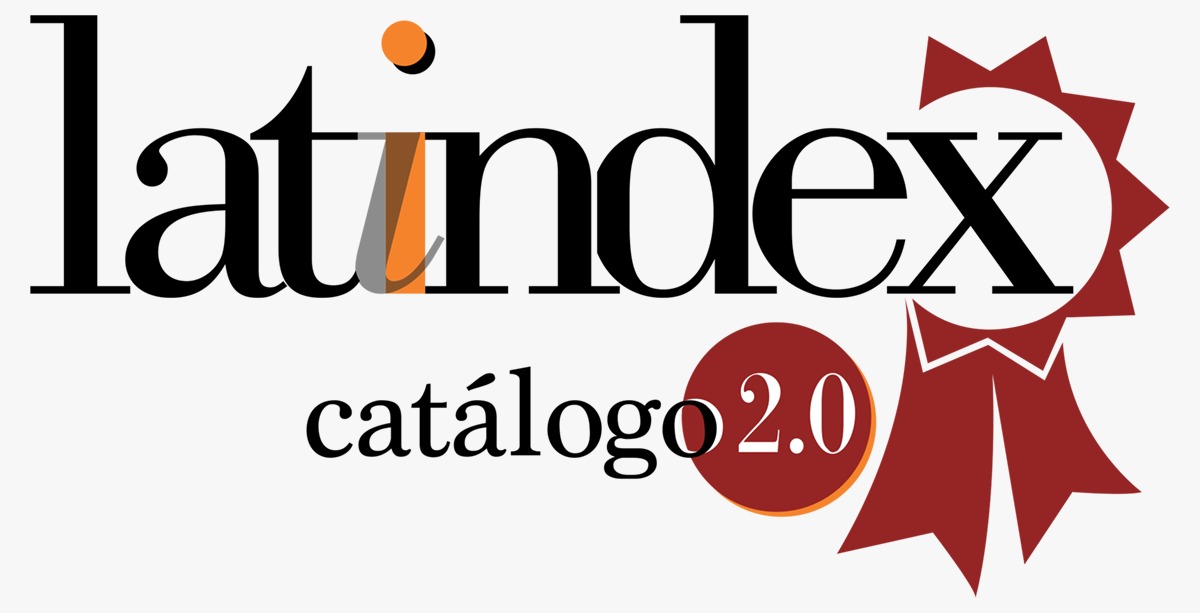Didactic Strategy "Mind Maps" In The Reading Comprehension Of Argumentative Texts. Case: 2nd year high school students from I.E. 5135 LA SALLE. Shut up.
DOI:
https://doi.org/10.47865/igob.vol6.n22.2023.273Abstract
The objective of this research was to determine the level of influence of the use of the mind mapping strategy for the improvement of reading comprehension of argumentative texts in the students of the 2nd year of secondary school of the I.E. N° 5135 "La Salle" of the district of Mi Perú- Callao. The methodology was experimental, with a quasi-experimental design with pretest and posttest. The population consisted of 60 students. The sections covered were A, with 30 students, and B, with the same number. The instrument used was a reading comprehension test and the technique used was observation. For data analysis, the mean and standard deviation were used for descriptive analysis.
The results obtained in the pre-test, for literal comprehension in the control group was a mean of 0.7 and a standard deviation of 1.14921, likewise, in the experimental group it had a mean of 2.6 and a standard deviation of 0.85501. For inferential comprehension the control group had a mean of 1.4667 and a standard deviation of 2.02967 in the pretestel while the experimental group in the inferential level had a mean of 6.5333 and a standard deviation of 1.47936. On the other hand, in the criterial level the control group had a mean of 1.3 and a standard deviation of 0.46609 in the pretest; and the experimental group had a mean of 1.2333 and a standard deviation of 0.6832.
In the post-test the results improved after the use of mind maps as a didactic strategy in argumentative texts, the mean of the control group for the literal level increased to 2.4667, while the mean of the experimental group increased to 3.4. In the inferential level test, the control group mean increased to 6.8 while the experimental group mean increased to 11.133. In the criterion level test the mean of the control group increased slightly to 1.4667 while the mean of the experimental group increased slightly to 1.5667.
For both groups, the data obtained show a tendency for the post-test scores to improve compared to the pre-test scores. This indicates that both the experimental and control groups may have received some training or intervention that improved their performance in the different comprehension categories.
For contracting the general and specific hypothesis, the Mann Whitney U statistical test was performed, where the results showed a significant change in the reading comprehension levels of the groups between the pre- and post-test. The values of the test statistics indicate that the results are not the same before and after the test.
For the literal and inferential comprehension levels of the groups between the pre- and post-test. The very low p-values suggest that the null hypothesis that the distributions of the groups are equal before and after the test can be rejected. Therefore, it is likely that the conditions of the experiment or the intervention influenced the improvement in literal comprehension.
However, according to the results obtained, it is concluded that there was no significant change in the criterial comprehension levels of the groups between the pre- and post-test. P-values greater than 0.05 indicate that the null hypothesis that the distributions of the groups are equal before and after the test cannot be rejected. This suggests that the interventions or conditions of the experiment did not have a significant impact on the participants' criterial understanding.
Finally, it is concluded that the use of the strategy of mind maps in argumentative texts significantly improved the literal and inferential reading comprehension of second grade high school students of the educational institution N° 5135 "La Salle" -Mi Perú.
Downloads
References
Arango, G.E. (2022) Políticas de gestión de riesgo de desastres y cultura de prevención en una Institución Educativa, Lima, 2022. [Tesis de maestría, Universidad Cesar Vallejo]. https://hdl.handle.net/20.500.12692/96188
Arias, J. L (2022). Guía para elaborar la operacionalización de variables. Espacio I+D, Innovación más Desarrollo, 10(28). https://doi.org/10.31644/IMASD.28.2021.a02
Barbón, O.G. y Fernández, J.W. (2018). Rol de la gestión educativa estratégica en la gestión del conocimiento, la ciencia, la tecnología y la innovación en la educación superior. Educación Médica, 19(1), 51-55. https://doi.org/10.1016/j.edumed.2016.12.001
Canese, M. I. et al. 2022. Dimensiones y desafíos de la participación ciudadana en la gestión de riesgo de desastres en Asunción, Área Metropolitana y Bajo Chaco, Paraguay. Revista de Estudios Latinoamericanos sobre Reducción del Riesgo de Desastres REDER, https://doi.org/10.55467/reder.v6i1.87
Carrasco, S. (2002). Gestión educativa y calidad de formación profesional en la Facultad de Educación de la UNSACA. [Tesis de maestría, Universidad Nacional Mayor De San Marcos]. https://hdl.handle.net/20.500.12672/1589
CENEPRED. (2022). Estudio de Escenario de Riesgo de Desastres para la Planificación y Gestión Territorial del distrito de Comas 2022.
https://www.municomas.gob.pe/resources/upload/paginas/defensacivil/1_Estudio_EERD-COMAS_2022.pdf
Condori, L. R. (2018). La Educación en Gestión del Riesgo de Desastres y su Relación con la Calidad de Gestión Educativa en los Docentes de las Instituciones con Jornada Escolar Completa, Distrito de Moquegua - 2018. [Tesis de maestría, Universidad Cesar Vallejo]. https://hdl.handle.net/20.500.12692/37451
CONGRESO (2011). Ley N° 29664: Ley del Sistema Nacional de Gestión del Riesgo de Desastres.
Correa, E. (2011). Preventive Resettlement of Populations at Risk of Disaster: Experiences from Latin America. Te World Bank
Euroinnova (2023). que es la gestión educativa según autores. https://www.euroinnova.pe/blog/que-es-la-gestion-educativa-segun-autores#botero-2009
Gabriel, E. (2017). Plan de gestión de riesgos de desastres y cultura ambiental: un análisis desde el enfoque cuantitativo. Espacio y Desarrollo, 29. http://revistas.pucp.edu.pe/index.php/espacioydesarrollo/article/view/17569/18490
Gonzales, 2021. Gestión de riesgo de desastres en el Centro Poblado de Tumpa, distrito de Yungay, provincia de Yungay, 2020. [Tesis de maestría, Universidad Cesar Vallejo]. https://hdl.handle.net/20.500.12692/58092
Ledesma Cuadros, M. J., Torres Cáceres, F. d. S., & Sánchez Diaz, S. (2020). Gestión comunitaria educativa en un contexto de enseñanza no presencial por la emergencia sanitaria. https://llamkasun.unat.edu.pe/index.php/revista/article/view/19
Malpartida, J. (2008) Aplicación de la Gestión de Riesgos en un Centro Educativo [Tesis de ingeniería, Pontificia Universidad Católica Del Perú]. http://hdl.handle.net/20.500.12404/1003
Nicolás, Y.W. (2010). Relación de la gestión educativa con el rendimiento académico de los alumnos del Instituto Superior Tecnológico "La Pontificia", Huamanga, Ayacucho, 2009. [Tesis de maestría, Universidad Nacional Mayor de San Marcos]. https://hdl.handle.net/20.500.12672/2392
“Política nacional de gestión del riesgo de desastres al 2050”
Instituto Nacional de Defensa Civil – INDECI, Perú, 2021
https://sinia.minam.gob.pe/documentos/politica-nacional-gestion-riesgo-desastres-2050
Quispe, S. C., & Acha, Y. Y. (2019). Capacidad de respuesta de nivel organizativo ante emergencias y desastres en Instituciones Educativas Públicas de los distritos metropolitanos de la ciudad de Huamanga y Huanta, 2018. [Tesis de Licenciatura, Universidad Nacional San Cristóbal Huamanga]. http://repositorio.unsch.edu.pe/handle/UNSCH/3809
Rico, A.D. (2016). La gestión educativa: Hacia la optimización de la formación docente en la educación superior en Colombia. Sophia 12(1): 55-70. https://www.redalyc.org/articulo.oa?id=413744648005
Roca, D., Ferradas, P. , Santillán , G. , Barrantes, A. , Chumpitaz, J. y Marcos, R. (2009), Gestión del riesgo en Instituciones Educativas. Guía para docentes de educación básica regular. Lima-Perú.
Rosero, Á. R. (2018) Inclusión de la Gestión del Riesgo de Desastres en los diferentes niveles de GAD del Ecuador considerando la relación entre el marco legal existente y prácticas populares tradicionales. Quito, 2018, 106 p. Tesis (Maestría en Gestión del Riesgo de Desastres). Universidad Andina Simón Bolívar, Sede Ecuador. Área de Gestión. http://hdl.handle.net/10644/6238
Somarriba, H. y Romero, R. (2002). Fundamentos conceptuales de la gestión de riesgos. Edit. Centro Humboldt.
Sorados, M. (2010). Influencia del liderazgo en la calidad de la Gestión Educativa. [Tesis de maestría, Universidad Nacional Mayor de San Marcos]. https://hdl.handle.net/20.500.12672/2388
Tineo Rivas, W. M. (2016). La gestión del riesgo de desastres y la planificación estratégica de las direcciones nacionales de una entidad pública de Lima - 2015. https://hdl.handle.net/20.500.12692/8202
Watanabe, M. (2015). Gestión del riesgo de desastres en ciudades de América Latina. Soluciones Prácticas (4).
Zacarias, G. Á. (2019). Sistema de Gestión Reactiva del Riesgo de Desastres y el Clima Organizacional en el Colegio Experimental de Aplicación la Cantuta. [Tesis de maestría, Universidad nacional de Educación Enrique Guzmán y Valle]. http://repositorio.une.edu.pe/handle/20.500.14039/4344
Euroinnova (2023). que es la gestión educativa según autores. https://www.euroinnova.pe/blog/que-es-la-gestion-educativa-segun-autores#botero-2009
Ministerio de educación (2004). Plan estratégico de Prevención y atención de Desastres del ministerio de Educación. https://inee.org/sites/default/files/resources/PER_plan_estrategico_prevencion_2004.pdf
Moreno Muñoz, M. (2018). Epistemología del riesgo y prevención de catástrofes. Ensayos de Filosofía ISSN 2444-2879. Número 7, 2018 (1), artículo 3. https://www.academia.edu/57043541/An%C3%A1lisis_epistemol%C3%B3gico_del_riesgo
Vargas, C. (2004). Rev. Filosofía Univ. Costa Rica, XLII (106-107), 35-42, Mayo-Diciembre 2004. https://revistas.ucr.ac.cr/index.php/filosofia/article/download/7470/7141/10169
Downloads
Published
How to Cite
Issue
Section
License

This work is licensed under a Creative Commons Attribution-NonCommercial-ShareAlike 4.0 International License.
Esta obra está bajo una licencia internacional Creative Commons Atribución-NoComercial-CompartirIgual 4.0.
















